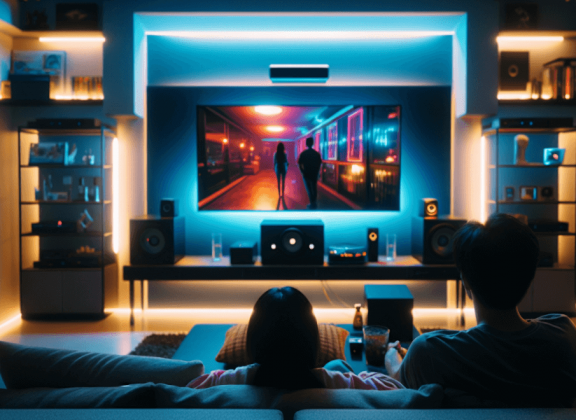Home entertainment has undergone a dramatic transformation in recent years, driven not just by higher resolutions, but by innovations in color, contrast, and brightness. Among these innovations, High Dynamic Range—or HDR—stands out as a foundational leap. Within this space, HDR10+ and Dolby Vision represent two of the most advanced formats available today. For users considering IPTV set-top boxes and media players, understanding the real-world impact of these technologies is crucial to maximizing content quality and device performance.
The Role of Dynamic Range in Visual Realism
Dynamic range defines the spectrum between the darkest and brightest elements an image can display. Traditional video formats using Standard Dynamic Range (SDR) are limited in both brightness and color detail, which can result in dull or washed-out visuals on today’s high-end TVs. HDR enhances this by dramatically widening both the luminance range and color accuracy. This results in content that feels more vivid, immersive, and true to how we naturally perceive our surroundings.
HDR isn’t only about brighter whites and deeper blacks—it’s about preserving detail in every corner of the screen, from sunlit landscapes to shadowy interiors. It gives storytellers more creative control and ensures that viewers at home get a closer representation of the cinematic intent.
HDR10+: A Smarter Way to Optimize Scenes
HDR10+ builds on the foundation of the older HDR10 format by introducing dynamic metadata. Unlike static metadata, which applies a single set of image parameters across an entire film or episode, dynamic metadata adapts the image settings frame by frame. This allows for real-time scene adjustment based on brightness and contrast needs, enhancing details in both bright and dark scenes.
This flexibility means HDR10+ content adjusts to the capabilities of your specific display, ensuring you always get the best possible version of a scene. Whether it’s a fast-moving action sequence or a quiet, low-light conversation, HDR10+ ensures precision tone mapping that elevates the viewing experience.
As an open standard with no licensing fees, HDR10+ is also gaining traction among manufacturers and content distributors, making it a futureproof feature for any media device.
Dolby Vision: Precision Imaging at Its Peak
Dolby Vision represents a premium tier in HDR technology. It also uses dynamic metadata but extends its capabilities further. With support for up to 12-bit color and peak brightness levels far beyond what current consumer TVs typically reach, Dolby Vision allows for finer gradation and a broader palette of shades and tones.
The strength of Dolby Vision lies in its end-to-end approach. Content is specifically mastered with Dolby’s proprietary tools to ensure accurate rendering, which is then maintained during playback. This controlled pipeline guarantees consistency and premium quality, especially when viewed on certified devices.
For media players, this translates into an elite performance standard. When content is created in Dolby Vision, every frame carries carefully calculated brightness and color data, ensuring precise reproduction—regardless of the content genre or ambient lighting conditions.
Compatibility Is Key for a Seamless HDR Experience
In today’s streaming landscape, support for both HDR10+ and Dolby Vision is no longer a luxury—it’s a requirement. Different streaming platforms and content producers often favor one format over the other, and having a media player that supports both ensures you’re never left with downgraded video quality.
This dual compatibility becomes especially important for IPTV users and enthusiasts of digital libraries. When a device lacks full HDR support, HDR content might default to SDR playback or suffer from improper tone mapping. In contrast, a well-equipped media player ensures that each piece of content is shown at its best, with no compromises in quality or performance.
Ultimately, HDR support must be native and deeply integrated within the device’s video processing capabilities, not added as an afterthought or firmware patch.
Technical Considerations When Selecting a Media Player
When evaluating a media player or IPTV box, it’s not enough to look at the spec sheet. A truly capable HDR device needs a robust processor, proper licensing for HDR formats, and seamless integration with modern TVs and streaming platforms. Hardware powered by advanced SoCs like those from Amlogic or Realtek often provides smoother HDR decoding and better upscaling.
HDMI version also matters: HDMI 2.0 is typically sufficient for 4K HDR content, but HDMI 2.1 adds headroom for higher frame rates and bandwidth, especially as future content evolves. Furthermore, native support for major streaming apps like Netflix, Disney+, and Amazon Prime Video ensures that HDR content can be accessed in its intended quality. Look for devices that are not only format-compliant but certified by streaming platforms, as this indicates a higher level of HDR playback reliability.
HDR as a Cornerstone of Next-Gen Entertainment
More content is being mastered in HDR than ever before—from blockbuster movies and streaming originals to next-gen console games. This trend underscores that HDR is no longer just an enhancement but a defining feature of visual storytelling.
HDR10+ and Dolby Vision aren’t about making images simply brighter—they’re about delivering content the way it was meant to be seen: with depth, clarity, and dramatic range. As consumer expectations shift, media devices that fail to support these standards risk becoming obsolete in an increasingly HDR-centric world.
With enhanced brightness, refined shadows, and superior color depth, HDR transforms how we engage with digital content. The difference is especially noticeable on high-quality 4K TVs, where SDR content can look flat by comparison. For anyone in the market for a new IPTV set-top box or media player, HDR support is now a critical consideration. HDR10+ and Dolby Vision each offer unique strengths, and the best media players today offer support for both to ensure broad compatibility and future-ready performance.
These technologies represent the next frontier in home entertainment. Choosing a media device that embraces both HDR10+ and Dolby Vision guarantees that you’re equipped not only for today’s content but also for tomorrow’s innovations in cinematic quality. Investing in HDR support means investing in an experience that is brighter, bolder, and undeniably better.
